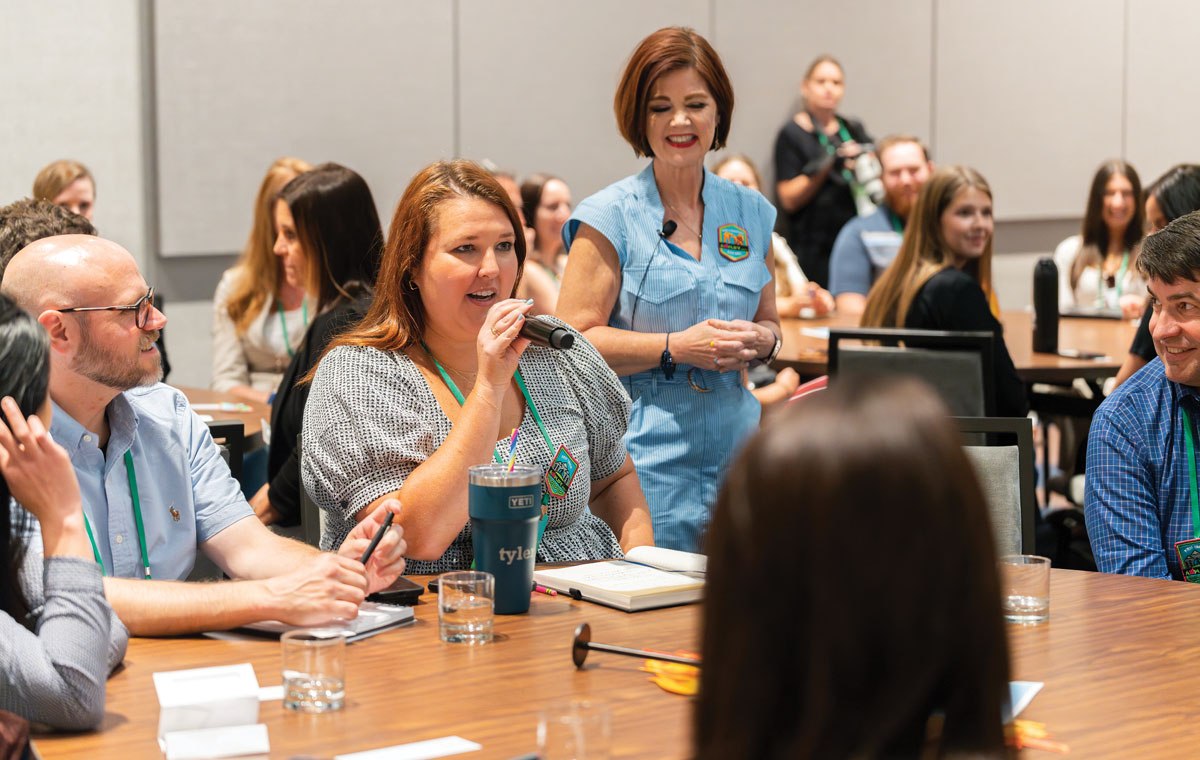



About

IN EVERY ISSUE
1.
PRESIDENT'S MESSAGE
Why Cultivating Value Matters

2.
Publisher's Message
Creativity, Authenticity, and the Power of Standing Out

3.
FROM THE EDITOR
Welcome to the January/February 2025 Issue of the Marketer

Calendar of Events
4.

At the beginning of the year, the Marketer Editorial Committee gathered to discuss how to connect with the SMPS audience around the theme of creativity for the Jan/Feb issue. We also wanted to explore tactics to engage diverse contributors and gain insight into how the Marketer can be an impactful resource for A/E/C growth professionals.
With this in mind, the committee asked the SMPS LinkedIn community a few questions:
Here are the comments we received in response.
- What does it mean to foster a culture that encourages creativity?
- Why do some believe creativity is reserved for designers and artists?
- What is the fear behind taking steps to embrace creativity?
Here are the comments we received in response.

Gabe Lett, FSMPS, CPSM, LPC
Chief Marketing Officer
Prairie Engineers, P.C.
Creativity requires failure! In business, this is a tightrope marketers must walk every day. There is a fragile balancing act we must perform so we can stay on the rope and keep our jobs. We are balancing two needs.
1. The firm must promote and market its services.
2. Marketing requires differentiation and the ability to grab attention.
Creativity is needed to meet this balance. I know our leadership does not like to hear this, but marketers need some space to fail. This space can be measured and carefully monitored, but there has to be space for failure.
“If you fail and then you figure out a solution with the people you work with to overcome that failure, you gain a lot of self-confidence. And if you gain selfconfidence, the next opportunity you have to succeed, you have a much better opportunity to do just that. To me, failure is amazing. It teaches you and really forces you to look inside yourself about what you can do better.”
— Tom Brady

Benjamin Culbreth
Copywriter | Content Strategist
Culbreth Copywriting, LLC
You can pick from any number of fears that keep people from really stepping into creativity, but I believe the most common one is "What if..."
Our fear and its close friend, imposter syndrome, love to play these questions over and over again in our minds. Creativity is a deeply personal endeavor, and that fear of the "what if…" scenario often holds us back.
Like Gabe said, it's okay to fail. With creativity, it's often a good thing because it teaches us so much.
What's not so good is letting fear stop us from trying great creative ideas. And that's a struggle we all have to deal with.
Scott Coers
Marketing Coordinator
Essex General Construction, Inc.
"Creativity is not a talent, it's a way of operating"
— Tom Brady
I heard this quote this morning on my commute and it is going to stick with me forever! Heard via the audiobook version of "Steal like an Artist - 10 Things Nobody Told You About Being Creative"
Amanda McHale
Marketing Manager
Rowe Professional Services Company
One of the most important qualities of a culture that encourages creativity is the MKT team/designers being open to ideas/trying new things. Tying into that 2nd question, marketers also have a responsibility to create that positive space while balancing their standards of design/adhering to branding goals.
I think the fear of rejection is the biggest factor when it comes to sharing creative ideas or that little voice, similar to the bystander effect, that says, “I’m sure someone has already thought of this.”
Julie Huval, FSMPS, CPSM
Owner/Consultant
Marketing Operations Advisor
One of the best pieces of advice I got about managing creatives is from Jay Acunzo. Give people simple boundaries to create within. The boundaries could be deadline-driven, budget allotment, resources available, etc. Always communicate the desired outcome to the creative.
Giving them boundaries allows them to get SUPER creative instead of starting from a blank slate.
Creativity requires thinking and processing time. Sometimes, that looks like sitting and doing nothing because the deep work is mental. However, we work in a world where the hustle is celebrated, and the extroverted activities are rewarded. So, the fear of not being seen as actively creating on the fly can hinder people from embracing the process of creativity.
Jay Acunzo
Speaking & Storytelling Advisor; Author and Speaker; Podcast Host
Unthinkable Media
Such a great way to build on my ideas. Love that! And agree! Give creatives a clearly defined box, and then ...
What hurts the process and lessens the result is other stakeholders either fail to set clear constraints, change them partway through (or realize what they were), or else they jump into the box and start meddling (shows a lack of trust).
It’s not too late to join this conversation. We want to hear your thoughts about creativity. Be sure to follow SMPS HQ on LinkedIn and comment on this thread here.
DANIELLE GRAY, MBA, is the Director, Content and
Knowledge Resources at SMPS HQ, where she is responsible for driving strategic content and learning initiatives. Her goal is to empower A/E/C marketing and business development leaders to foster growth and excellence in the industry. A SMPS member since 2017, Danielle speaks to chapters and regional conferences about content and authenticity.
Connect on Linkedin








